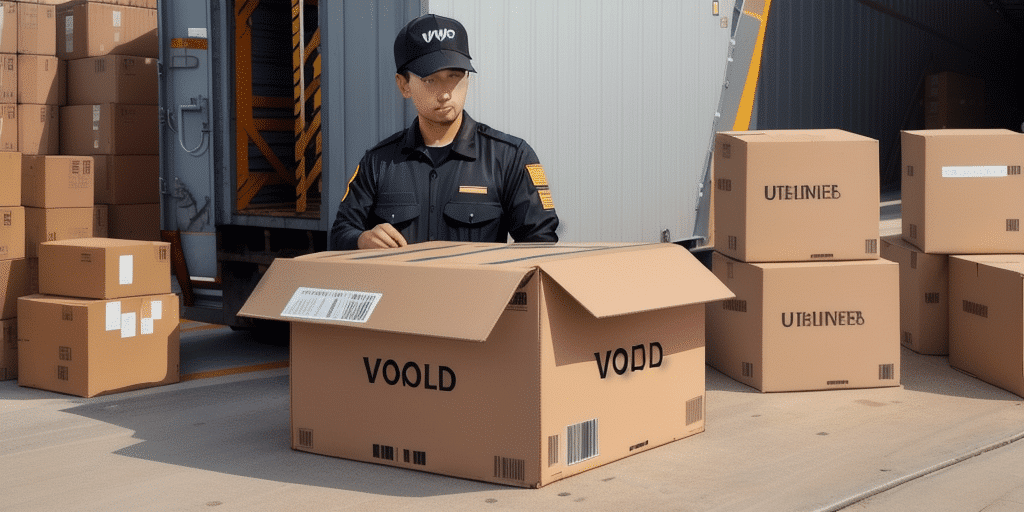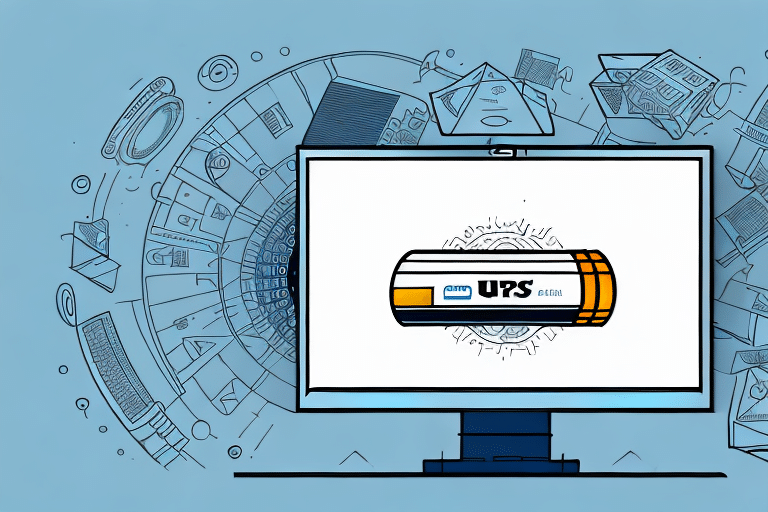How to Un-Void a Shipment After End of Day in UPS Worldship
Shipping is a crucial aspect of modern business, and companies rely on efficient and accurate shipping processes to deliver products to their customers. However, mistakes can happen, and one of the most significant issues that shippers face is unintentionally voiding a shipment. Voiding a shipment means that the package is no longer considered part of the shipment, and UPS will not deliver it to the intended recipient. This can create a range of problems, from angry customers to lost revenue for your business. In this article, we will discuss how to un-void a shipment after the end of day in UPS Worldship to help you avoid these problems and keep your shipping processes running smoothly.
Understanding Shipment Voiding: Reasons and Consequences
Why Voiding a Shipment is Sometimes Necessary
Before we dive into the process of un-voiding a shipment, it's essential to understand why voiding a shipment is sometimes necessary. Voiding a shipment can occur for various reasons, such as incorrect data entry, labeling errors, or the wrong package being included in the shipment. Voiding a shipment is also necessary if the package is damaged or if the wrong product was shipped. In these cases, voiding the shipment and re-shipping the correct package is the best course of action. It's important to note that voiding a shipment should only be done if absolutely necessary, as it can disrupt your shipping process and potentially upset your customers.
Another reason why voiding a shipment may be necessary is if the customer cancels their order before it has been shipped. In this case, voiding the shipment and refunding the customer is the appropriate action to take. It's important to communicate with the customer and keep them informed of the voiding process to maintain a positive relationship.
Voiding a shipment can also be necessary if there are issues with customs or international shipping regulations. If the package is held up in customs or does not meet the necessary regulations, voiding the shipment and re-shipping with the correct documentation is necessary to avoid any legal issues or fines.
The Consequences of Voiding a Shipment After End of Day
The consequences of voiding a shipment after the end of day process can be severe for both your business and your customers. If a shipment is voided after the end of day process, the package will be considered separate from the shipment and will not be delivered. This can cause delays in shipping times, lost revenue, and angry customers who are expecting their packages. It's essential to avoid voiding shipments whenever possible and to un-void them quickly if it does happen.
One of the main reasons why voiding a shipment after the end of day process can be so detrimental is that it can disrupt the entire shipping process. When a shipment is voided, it can cause confusion and delays for the shipping carrier, as they may need to reroute the package or try to locate it. This can result in additional fees and charges for your business, as well as frustration for your customers who are left waiting for their packages.
In addition to the financial and logistical consequences of voiding a shipment after the end of day process, there can also be reputational damage to your business. If customers consistently experience delays or issues with their shipments, they may begin to lose trust in your brand and seek out alternative options. It's important to prioritize timely and accurate shipping practices to maintain a positive reputation and retain customer loyalty.
Recognizing and Handling Voided Shipments in UPS Worldship
How to Identify and Locate a Voided Shipment in UPS Worldship
If you suspect that a shipment has been voided, the first step is to locate the voided shipment in UPS Worldship. To do this, navigate to the 'Shipment History' tab and search for the shipment in question. If the shipment has been voided, it will appear in the list with a red void stamp next to it. Clicking on the shipment will bring up a message confirming that it has been voided.
Troubleshooting Common Issues When Un-Void a Shipment in UPS Worldship
If you encounter any issues when un-voiding a shipment in UPS Worldship, follow these troubleshooting steps:
- Verify Package Selection: Ensure that you have selected the correct package that needs to be un-voided.
- Check System Status: Confirm that UPS Worldship is not experiencing any outages or technical difficulties.
- Review Permissions: Make sure you have the necessary permissions and access rights to un-void shipments.
- Contact UPS Support: If problems persist, reach out to UPS customer support for further assistance.
How to Properly Document Un-Void Shipments for Record-Keeping and Tracking Purposes
Properly documenting un-voided shipments is essential for record-keeping and tracking purposes. Follow these best practices:
- Update Shipping Records: Ensure that your shipping and tracking records are updated to reflect the un-voided shipment status.
- Include Detailed Information: Document the reason for the initial voiding and the actions taken to un-void the shipment.
- Maintain Consistent Logs: Keep consistent logs of all shipping activities to facilitate easy tracking and auditing.
Step-by-Step Guide to Un-Void a Shipment in UPS Worldship
The Step-by-Step Process for Un-Void a Shipment After End of Day in UPS Worldship
Un-voiding a shipment after the end of day process has been completed requires a few simple steps. Follow the steps below to reinstate your shipment:
- Locate the Voided Shipment: Go to the 'Shipment History' tab in UPS Worldship and search for the voided shipment.
- Select the Shipment: Click on the shipment that has been voided. It will have a red void stamp next to it.
- Un-Void the Shipment: Click on the 'Un-Void' button associated with the shipment.
- Confirm the Action: A confirmation message will appear. Confirm that you want to un-void the shipment.
- Verify the Shipment: Once confirmed, the package will be added back to the original shipment, and UPS will begin delivering it to the intended recipient.
Preventing Shipment Voiding: Best Practices and Tips
Mistakes That Can Lead to Inadvertent Shipment Voiding
There are several common mistakes that can lead to inadvertently voided shipments. One of the most common mistakes is incorrect data entry. This can occur when a shipping label is printed with the wrong information, such as the wrong address or incorrect weight. Another common mistake is labeling errors, where the wrong shipping label is applied to the package. It's important to double-check all labels to ensure that they match the package being shipped. Finally, selecting the wrong package to be shipped within the shipment can lead to voiding the entire shipment, causing significant delays and disruption to your shipping process.
Another mistake that can lead to inadvertent shipment voiding is improper packaging. If a package is not properly packed, it can become damaged during transit, leading to the shipment being voided. It's important to use appropriate packaging materials and to ensure that the package is securely sealed before shipping.
Additionally, failing to comply with shipping regulations can also lead to voided shipments. This can include not properly labeling hazardous materials or not following specific shipping requirements for certain types of products. It's important to stay up-to-date on shipping regulations and to ensure that all shipments comply with these regulations to avoid any potential voided shipments.
Tips for Avoiding the Need to Un-Void Shipments in the Future
The best way to avoid the need to un-void shipments in the future is by ensuring accurate data entry and labeling. Here are some effective strategies:
- Double-Check Information: Always verify recipient addresses, package weights, and other essential details before printing shipping labels.
- Implement Barcode Scanning: Investing in barcode scanning technology can help minimize errors and ensure that the correct packages are being shipped.
- Standardize Shipping Procedures: Develop a standardized process for your shipping department, including checklist usage and regular audits.
- Train Your Team: Provide comprehensive training for your shipping staff to emphasize the importance of accuracy and compliance.
- Maintain Open Communication: Keep open lines of communication with your customers to prevent issues like incorrect addresses or unclear delivery instructions.
How to Ensure Accurate Data Entry and Labeling to Prevent Voided Shipments
To ensure accurate data entry and labeling, it's necessary to create a standardized process for your shipping department. This process should include:
- Verification Steps: Implement multiple verification steps to catch errors before they occur.
- Use of Technology: Utilize barcode scanning and automated data entry tools to reduce human error.
- Quality Control Checks: Perform regular quality control checks on shipped packages to ensure consistency and accuracy.
- Comprehensive Training Programs: Invest in training programs that educate your staff on best practices for data entry and labeling.
The Importance of Communication with Customers and Recipients When Un-Void a Shipment
When un-voiding a shipment, it's essential to communicate with your customers and recipients to keep them informed of any delays or changes to their shipment. Here are some communication strategies:
- Notify Customers Promptly: Inform customers immediately if a shipment has been voided and then un-voided.
- Provide Detailed Explanations: Clearly explain why the shipment was voided and the steps taken to rectify the issue.
- Set Expectations: Let customers know when they can expect to receive their package after un-voiding.
- Offer Support: Provide channels for customers to reach out if they have further questions or concerns.
Managing High-Volume Shipping Seasons and Utilizing Support Resources
Best Practices for Managing Shipments During High-Volume Shipping Seasons
During high-volume shipping seasons, managing your shipments can be challenging. To help minimize errors and reduce the risk of inadvertent voided shipments, consider implementing the following best practices:
- Increase Staffing Levels: Hire additional staff to handle the increased volume and reduce the likelihood of errors.
- Enhance Training Programs: Provide specialized training for your staff to address the unique challenges of peak seasons.
- Implement Advanced Technology: Utilize shipping software and automation tools to streamline shipping processes and maintain accuracy.
- Conduct Regular Audits: Perform regular audits of your shipping operations to identify and address potential issues proactively.
Utilizing UPS Worldship Resources and Support to Streamline Shipping Processes and Minimize Errors
UPS Worldship offers a range of resources and support to help streamline your shipping processes and minimize errors. Consider taking advantage of:
- Training Programs: Participate in UPS Worldship training programs to stay updated on the latest features and best practices.
- Online Knowledge Base: Access the UPS Online Knowledge Base for guides, tutorials, and troubleshooting tips.
- Customer Support: Reach out to UPS customer support for personalized assistance with any software-related issues.
- Integration Tools: Utilize integration tools and APIs provided by UPS to connect Worldship with your existing systems seamlessly.
The Benefits of Outsourcing Shipping Management to Third-Party Logistics Providers (3PLs)
If managing your own shipping processes is becoming overwhelming, consider outsourcing your shipping management to a third-party logistics provider (3PL). A 3PL can help streamline your shipping processes, reduce errors, and free up your resources to focus on other aspects of your business. Additionally, outsourcing your shipping management can help you save on equipment and labor costs, making it a cost-effective solution for many businesses.
Conclusion
Un-voiding a shipment after the end of day in UPS Worldship requires a few simple steps. By understanding the reasons for voiding a shipment, identifying and locating voided shipments, and following the step-by-step process for un-voiding shipments, you can help ensure that your shipping processes run smoothly and efficiently. Utilizing best practices, such as accurate data entry and labeling, proper documentation, and open communication with customers, can help minimize errors and prevent the need for un-voiding shipments in the future.






















